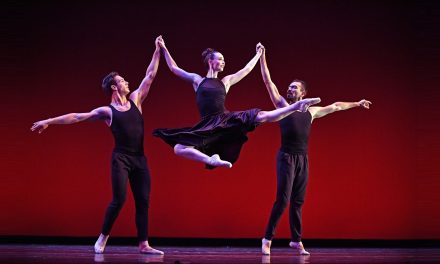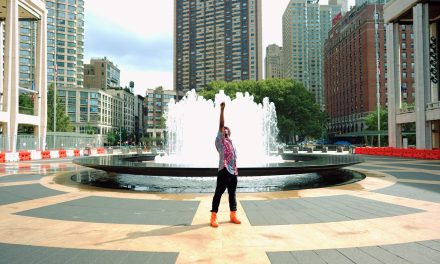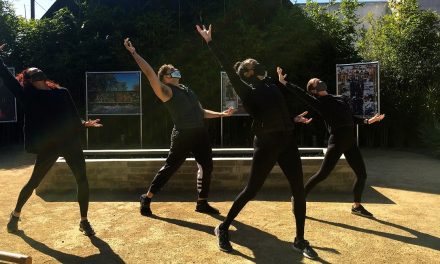Ever since Tamara Rojo was announced as the new artistic director of the venerable San Francisco Ballet, the usual speculation about changes to come under new artistic leadership has been at a higher pitch. Some of those questions were answered this week when SF Ballet announced its 2023-2024 season. For her inaugural season, Rojo hints at new contemporary directions commissioning ballets from three women choreographers. At the same time, the season offers plenty of classical ballet programming, continuing much of the proven approach of the man she replaces, retiring artistic director Helgi Tomasson.
The Spanish-born Rojo comes to the artistic director chair after an international career that includes a decade as a principal dancer with Britain’s Royal Ballet before leading English National Ballet for more than nine years as artistic director where she gained a reputation for innovative approaches to contemporary as well as ballet classics. After accepting this new post in late 2022, Rojo arrived in San Francisco in early 2023. This allowed her to be present during the company’s current season, the last programed by Tomasson. Rojo has had time during the transition to become familiar with the existing repertoire and the company dancers while planning the 2023-2024 season.
Rojo’s appointment to the helm of this major U.S. ballet company not only marks this company’s first female director, but she is only the fifth artistic director since the company’s founding in 1933. She also follows the company’s longest serving artistic director whose style of leadership and programming has been successful. During his 37-year career, Tomasson mastered how to fill the enormous War Memorial Opera House that is the company’s home venue. His approach presented a blend of ballet classics, adventurous new contemporary ballets, and a Nutcracker that pays homage to San Francisco and the 1915 Panama–Pacific International Exposition, the city’s comeback event after the 1906 earthquake and fire had destroyed much of the city.
Tomasson’s San Francisco-centric Nutcracker opens the 2023-2024 season in December, but the new year brings an early signal of where Rojo wants to take the company. The season opens and closes with adventurous contemporary commissions with a wealth of pedigreed classics sandwiched in between. |
2024 opens with the first full-length ballet SF Ballet has commissioned from a female choreographer, Canadian choreographer Aszure Barton who pairs with a team of technological wizards led by the U.K.-based composer/producer/DJ known as Floating Points (aka Sam Shepherd). Titled Mere Mortals, the creators intend to take ballet into an immersive world, drawing parallels between artificial intelligence and Pandora opening that tempting box. Working with an international team drawn from Spain and Australia, Barton and Floating Points have set out to blend dance, electronic music, design, and technology into an immersive experience. The season’s flagship event includes the composer performing live alongside the Grammy award-winning San Francisco Ballet Orchestra.
That contemporary salvo is followed by a program considering love and loss as pondered by legendary British choreographers Sir Frederick Ashton and Sir Kenneth MacMillan. Set to the Mahler song cycle Das Lied von der Erde, MacMillan’s Song of the Earth draws on Japanese influences. Ashton’s Marguerite and Armand represents something of a coup as SF Ballet is only the second company to perform the ballet created for Dame Margot Fonteyn and Rudolph Nureyev at the height of their partnership. Inquiring minds will be wondering which of SF Ballet’s deep roster of principal dancers will be picked for the leads.

San Francisco Ballet – Wona Park and Wei Wang in Helgi Tomasson’s “Swan Lake/” Photo by Erik Tomasson
February concludes with more classical ballet, the ever popular, full-length Swan Lake choreographed by Helgi Tomasson. The ballet has been in SF Ballet’s repertoire since 1940 with Tomasson’s version created in 1988. It’s presence as a regular part of the repertoire affirms how those swans and the fouettés remain irresistible to audiences.

San Francisco Ballet in Balanchine’s A Midsummer Night’s Dream // Choreography by George Balanchine © The Balanchine Trust; Photo © Erik Tomasson
It was 2020. The company had just completed the first performances of George Balanchine’s A Midsummer Night’s Dream when the Covid-19 pandemic closed the theater along with most of the state. That interrupted ballet returns in March 2024, four years after that Covid closure. Balanchine’s rapturous full-length take on Shakespeare is populated with so many important parts, it requires depth on the bench from the principals and soloists to the corps. The ballet affords an opportunity to see a wide swath of the company talent in one show. In the years since that truncated 2020 season, the SF Ballet company roster has shifted and some dancers who were corps or soloists in 2020 have moved up in the ranks and likely will be dancing different roles than when the pandemic stopped the dancing.
In April, the company concludes the season with a swing back into contemporary mode with two programs in repertory. Under the banner, Dos Mujeres, Rojo commissioned two more female choreographers, Cuban-born/British-based Arielle Smith and Columbian/Belgian Annabelle Lopez Ochoa. That program alternatives with next@90 Curtain Call reprising three stand out contemporary ballets from this past February’s new works festival.
As part of the 2022-2023 season marking its 90th anniversary, SF Ballet hosted next@90. Tomasson’s last festival, commissioned nine contemporary ballets divided into three programs. The trio of ballets being reprised are from choreographers with strong ties to SF Ballet. In Violin Concerto, the company’s resident choreographer Yuri Possokhov pays tribute to George Balanchine and his partnership with Igor Stravinsky. Nicolas Blanc, a former SF Ballet principal dancer and current choreographer at The Joffrey Ballet drew on a Rumi poem for Gateway to the Sun. In MADCAP, frequent SF Ballet collaborator and newly appointed director of Oregon Ballet Theatre, Danielle Rowe crafted a stunning theatrical world of clowns that alongside the music and live dancer vocalizations, quietly builds a quiet multi-layered contemplation on who one is or becomes without the costumes and makeup. The February performances also marked the final performances of the central clown, principal Tiit Helimets who retired after an 18-year career. Who will fill that role this time around or will Helimets, who remains in another position with the company, return for this ballet?
While Barton reconsiders Pandora in January, in Dos Mujeres Smith takes the temptress Carmen and Lopez Ochoa summons Frieda Kahlo, making a triptych of new ballets focused on legendary women.
Smith is not well known in the states, but in Britain this fast-rising star garnered an Olivier award and paired with Matthew Bourne on his Romeo and Juliet. Smith’s Carmen has a Caribbean influence with the ballet’s score by Grammy Award-winning jazz composer/pianist Arturo O’Farrill incorporating Cuban folk music. However, Ochoa is a familiar visitor to San Francisco. Several of her works have been performed by the city’s Smuin Contemporary Ballet and her ballet based on Picasso’s anti-war painting Guernican was commissioned by SF Ballet for a 2019 new works festival. This time, Ochoa’s Broken Wings turns to the story of Mexican artist and cultural icon Frieda Kahlo promising mariachi, Mexican folk music, and a chorus of skeletons.

Tamara Rojo as Frida in English National Ballet’s “Broken Wings” by Annabelle Lopez Ochoa – Photo © Laurent Liotardo
San Francisco Ballet at the War Memorial Opera House, 301 Van Ness Ave., San Francisco; Dec. 13, 2023 to April 14, 2024, $29-$398; dates of specific ballets and more info HERE.
Season at a glance:
2023
Nutcracker (December 13–30, 2023)
2024
Azsure Barton’s Mere Mortals (January 26–February 1)
Kenneth MacMillan’s Song of the Earth and Frederick Ashton’s Marguerite and Armand (February 9–15)
Swan Lake -(February 23–March 3)
George Balanchine’s A Midsummer Night’s Dream (March 12–March 23)
next@90 Curtain Call with Yuri Possokhov’s Piano Concerto, Nicolas Blanc’s Gateway to the Sun, Danielle Rowe’s MADCAP
in repertory with
Dos Mujeres with Arielle Smith’s Carmen (World Premiere) and Annabelle Lopez Ochoa’s Broken Wings (April 2–14)
For more information on the San Francisco Ballet, please visit their website.
Written by Ann Haskins for LA Dance Chronicle.
Featured image: Max Cauthorn in San Francisco Ballet in Nicolas Blanc’s Gateway to the Sun – Photo by Lindsay Thomas











